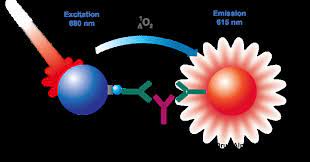Determining Clinical Outcomes With PK Assay Services And Cohort Analysis

Pharmacokinetics (PK) can be defined as studying drug movement throughout the body. Understanding the drug movement helps unravel critical information about drug exposure over time. On the other hand, pharmacodynamics (PD) studies drug effects on the human body. To collect PK/PD data, researchers must conduct clinical studies to assess the magnitude and duration of drug effects. Hence, pharmacokinetic testing coupled with PD data is essential to evaluate the safety and efficacy of a drug product.
Each patient has unique bio-variability. Hence, any specific drug may behave differently among the population. Factors such as sex, age, genetics, and weight will influence how the human body processes a drug product. Besides, the minimum plasma concentration required to produce a pharmacological response and maximum tolerated drug plasma concentration differs between individuals.
Hence, designing a robust PK assay is vital to ensure that an appropriate therapeutic exposure range is achieved in the population without any intolerable side effects. Pharmacokinetic services accomplish this goal by employing PK testing and studying PK parameters through ADME studies. Let us dive deep into assessing how clinical outcomes are determined using PK services and cohort analysis in drug discovery process.
PK analysis: ADME process
ADME stands for absorption, distribution, metabolism, and excretion. The ADME process describes how a drug is absorbed, distributed, metabolized, and excreted from the body. A collective approach in clinical pharmacology studies determines ADME properties and explains data generated from PK analysis. Thus, ADME properties are crucial to developing safe and effective drug products. Let us now focus on understanding several preclinical and clinical studies in PK analysis to determine clinical outcomes.
Determining clinical outcomes
- First-in-human study: This PK analysis is a vital stage in the drug discovery and development process. This study estimates initial doses and helps design a clinical trial that will incorporate all relevant metrics.
- Single Ascending Dose (SAD) study: SAD clinical trials are generally the first studies conducted on human participants. SAD studies begin with single doses at several dose levels. Only after a successful SAD study in the first cohort, higher doses of a drug can be administered to the next cohort of participants.
- Multiple Ascending Dose (MAD) study: MAD clinical trials are often followed by SAD studies. MAD studies focus on investigating the drug product at several dose levels. As most drugs are consumed repetitively, MAD studies are one of the most significant studies in the drug development process.
- Food effect study: This study is mainly for orally administered drugs. Understanding the effect food will have on drug absorption is vital for any orally administered drug product.
- Drug-drug interaction study: Similar to the effect of food intake on a drug,, today multiple drugs are administered together. Hence, understanding how numerous drugs will affect PK/PD properties of each other becomes crucial for a new drug product.
- Hepatic impairment study: The liver metabolizes and partially excretes most pharmaceutical drugs. Several medical and disease conditions can affect hepatic functions. Hence, evaluating the effects of a drug on liver function is essential to designing drugs for impaired liver patients.
- Renal impairment study: Kidneys are primarily responsible for excreting drugs from the body. Therefore, similar to the hepatic impairment study, renal impairment studies are necessary to produce drug products for patients with renal impairment.



